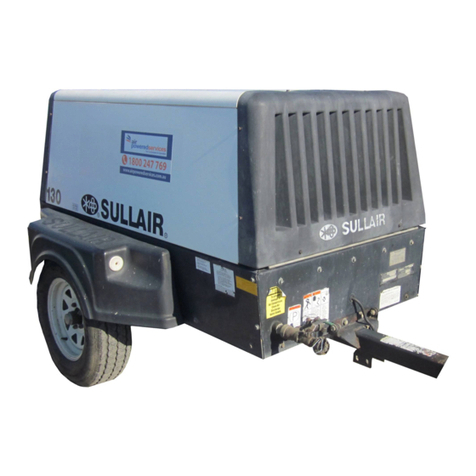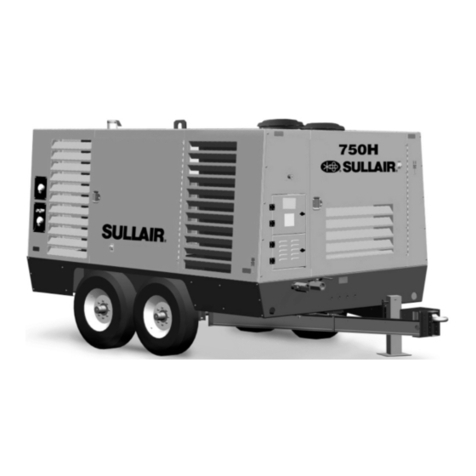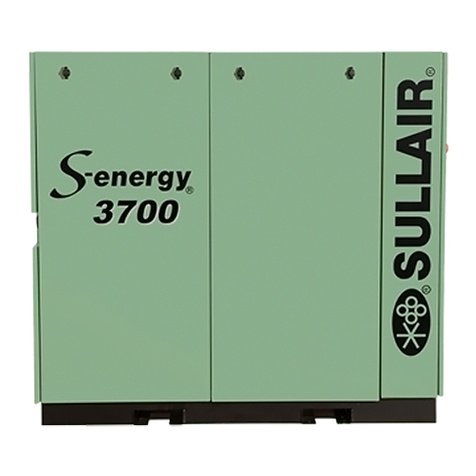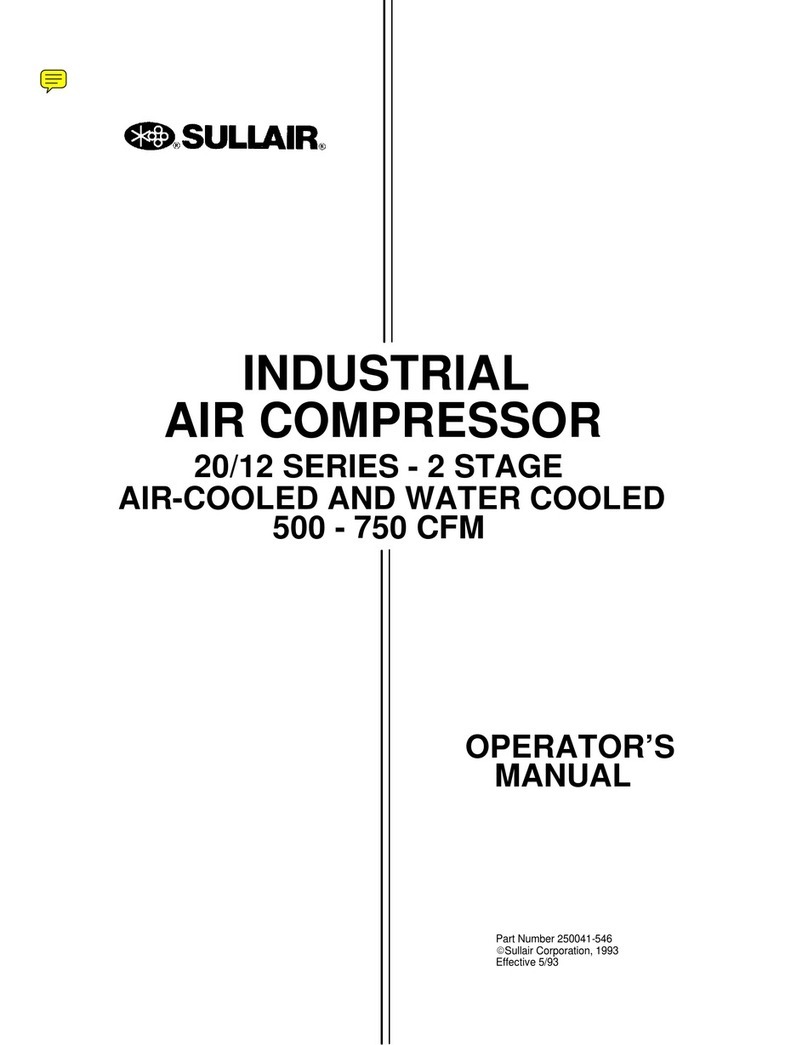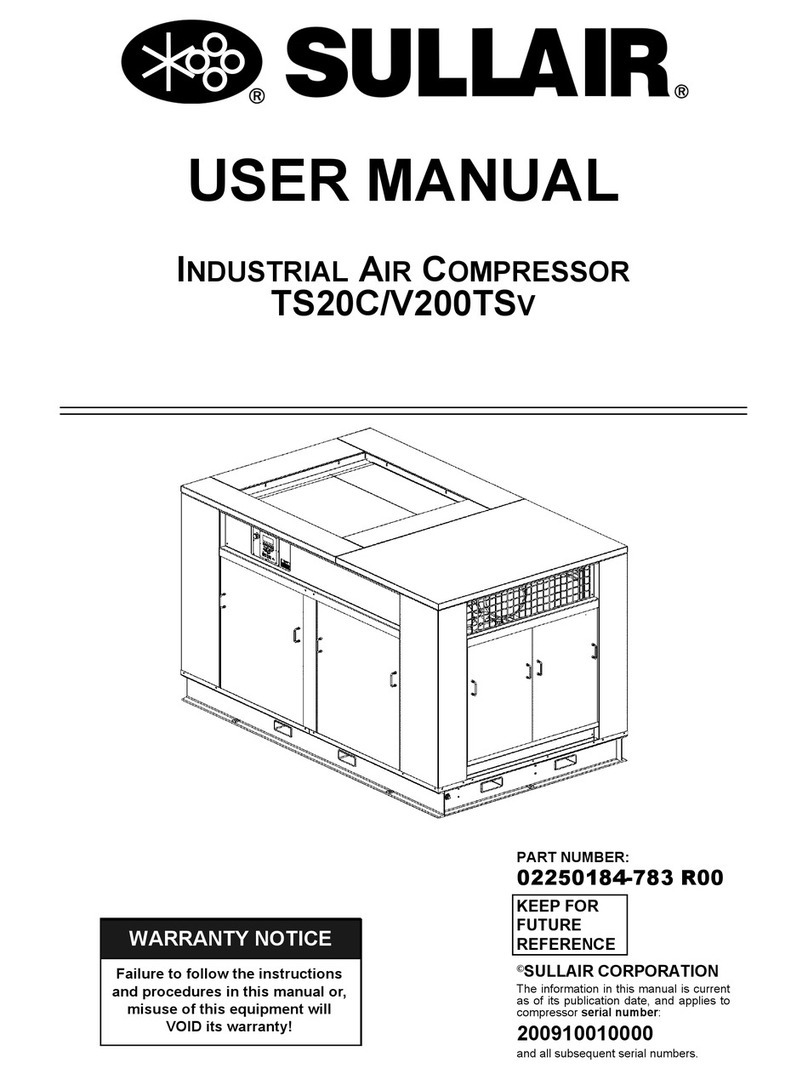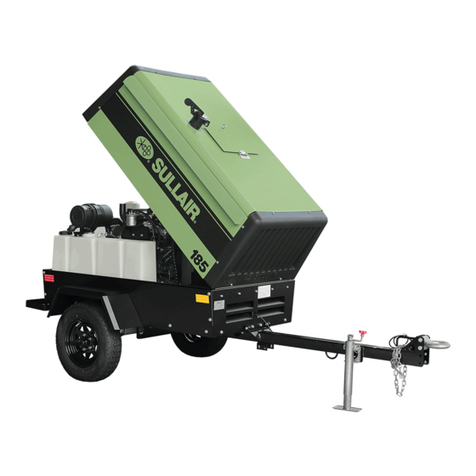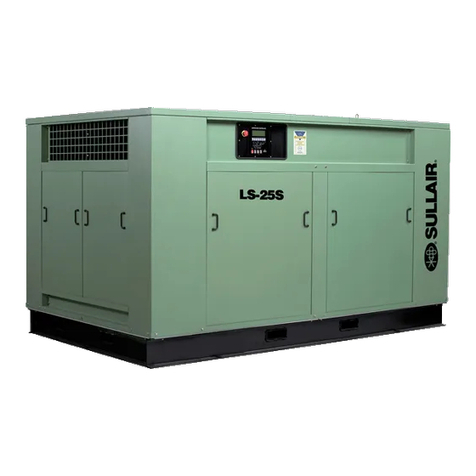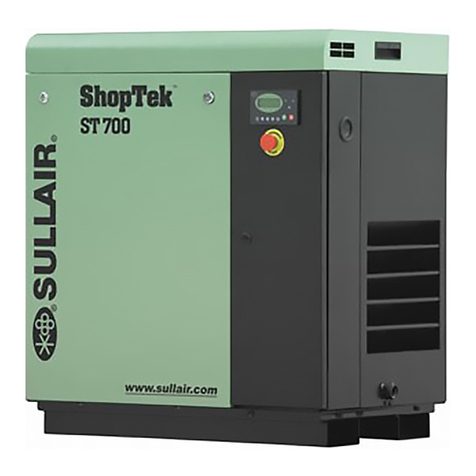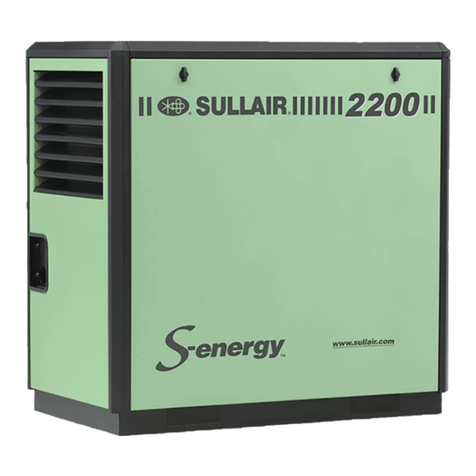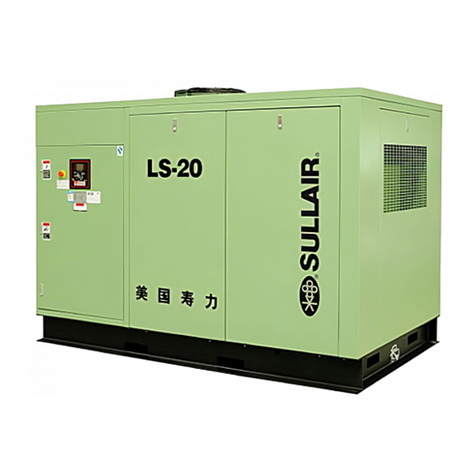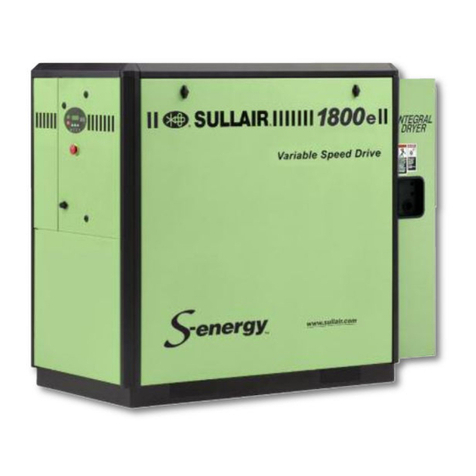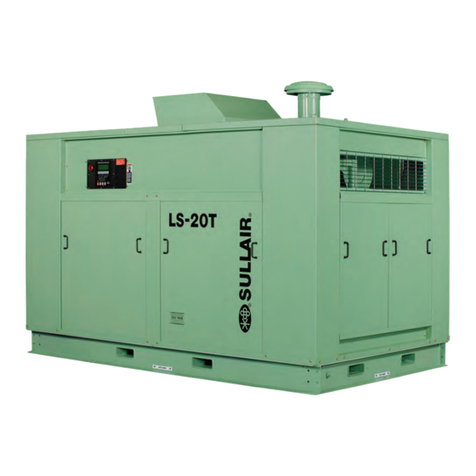
Section 1
SAFETY
1
1.1 GENERAL
Sullair Corporation and its subsidiaries design and
manufacture all oftheir products so they can be op-
erated safely. However, the responsibility for safe
operation rests with those who use and maintain
these products. The following safety precautions
are offered as a guide which, if conscientiously fol-
lowed, will minimize the possibility of accidents
throughout the useful life of this equipment.
The compressor should be operated only by those
whohavebeentrainedanddelegatedtodoso,and
who have read and understood this Operator’s
Manual. Failure to follow the instructions, proce-
dures and safety precautions in thismanual canre-
sult in accidents and injuries. Read this manual
prior to startup.
NEVER start the compressor unless it is safe to do
so. DO NOT attempt to operate the compressor
with a known unsafe condition. Tag the compres-
sor and render it inoperative by disconnecting and
locking out all power at source or otherwise disab-
ling itsprime mover, soothers whomay not knowof
the unsafe condition, cannot attempt to operate it
until the condition is corrected.
Install, use and operate the compressor only in full
compliance with allpertinent regulations andallap-
plicable Federal, State, and Local codes, stan-
dards and regulations.
DO NOT modify the compressor and/or controls in
any way except with written factory approval.
While not specifically applicable to all types ofcom-
pressors with all types ofprime movers, most ofthe
precautionary statements contained herein are ap-
plicable to most compressors and the concepts
behind these statements are generally applicable
to all compressors.
1.2 PERSONAL PROTECTIVE EQUIPMENT
Prior to installing or operating the compressor,
owners, employers and users should become fa-
miliar with, and comply with, all applicable regula-
tions and any applicable Federal, State and Local
codes, standards, and regulations relative to per-
sonal protective equipment, such as eye and face
protective equipment, respiratory protective equip-
ment, equipment intended to protect the extremi-
ties, protective clothing, protective shields and bar-
riers and electrical protective equipment, as well as
noise exposure administrative and/or engineering
controls and/or personal hearing protective equip-
ment.
1.3 PRESSURE RELEASE
A. Install an appropriate flow---limiting valve be-
tween the service air outlet and the shut---off
(throttle) valve, either at the compressor or at any
other point along the air line, when an air hose ex-
ceeding 1/2” (13mm) inside diameter is to be con-
nected to the shut---off (throttle) valve, to reduce
pressure in case of hose failure, per all applicable
Federal, State and Local codes, standards and
regulations.
B. Whenthehoseistobeusedtosupplyaman-
ifold, install an additional appropriate flow---limiting
valve between the manifold and each air hose ex-
ceeding 1/2” (13mm) inside diameter that is to be
connected to the manifold to reduce pressure in
case of hose failure.
C.Provideanappropriate flow---limiting valve atthe
beginning of each additional 75 feet (23m) of hose
inruns of air hose exceeding 1/2”(13mm) inside di-
ameter to reduce pressure in case of hose failure.
D. Flow---limiting valves are listed by pipe size and
rated CFM. Select appropriate valves accordingly,
in accordance with their manufacturer’s recom-
mendations.
E. DO NOT use air tools that are rated below the
maximum rating of thecompressor.Select air tools,
airhoses, pipes, valves, filters, and otherfittings ac-
cordingly. DO NOT exceed manufacturer’s rated
safe operating pressures for these items.
F. Secure all hose connections by wire, chain or
other suitable retaining devices to prevent tools or
hose ends from being accidentally disconnected
and expelled.
G. Open fluid filler cap only when compressor is
not running and is not pressurized. Shut down
the compressor and bleed the sump (receiver) to
zero internal pressure before removing the cap.
H. Vent all internal pressure prior to opening any
line, fitting, hose, valve, drain plug, connection or
other component, such as filters and line oilers,
and before attempting to refill optional air lineanti---
icer systems with antifreeze compound.
I.Keep personnel outof linewith andaway fromthe
discharge opening ofhoses ortools or other points
of compressed air discharge.
J.Use airat pressures less than 30psig(2.1 bar)for
cleaning purposes, and then only with effective
chip guarding and personal protective equipment.
K. DO NOT engage in horseplay with air hoses as
death or serious injury may result.
L. DO NOT tamper with sump and unit (if pro-
vided) relief valves. Check the relief valve as rec-
ommended in the Maintenance Section of this
manual or at a minimum of at least weekly to make
sure itis notblocked, clogged, obstructed orother-
wise disabled. DO NOT change the factory setting
of the relief valve.
M. If the compressor is installed in an enclosed
area, it is necessary to vent the relief valve to the
outside of the structure or to an area of non---expo-
sure.

